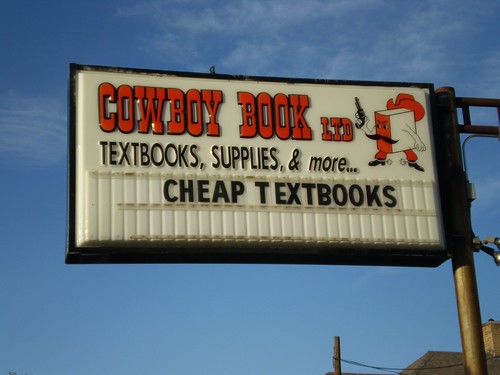With all the talk about the “unbundling” of education, it’s interesting to see several universities start to experiment with a re-bundling of sorts — that is, bundling textbook expenses along with students’ course fees and tuition, and as such requiring students purchase the course materials (often in digital format) for their classes. In doing so, the schools argue, they’re able to negotiate lower prices with publishers by promising bulk sales of textbooks and other materials.
Indiana University was among the first to pilot this sort of program several years ago, and similar efforts are underway at other schools. According to a recent story in USA Today, this includes the University of California-Berkeley, University of Minnesota, University of Wisconsin, University of Virginia and Cornell University.
It’s an experiment that seems to be catching on with schools, with bookstores, and with publishers. The latter are looking to survive the shift from print to digital; the former want to help students afford the materials they need to do well in their classes.
A recent press release by Follett, which runs about 900 campus bookstores directly and services over 1600 indie ones as well, highlighted its plans for what it describes as “the next chapter in affordability” for college textbooks: IncludED, a program that “allows schools to provide required course materials to students as part of tuition or fees, ensuring students understand the full cost of education upfront and are prepared with required course materials on day one.”
Indeed, this does solve the “problem” of students not having the required materials on day one. About a third of students report going without purchasing the required textbooks for their classes. But to frame this in terms of a lack of student preparation only gets at part of the issue. When students talk about course materials and textbooks, that isn’t the way they tend to frame the problem. The problem for students is cost.
The bundling of textbooks with tuition is supposed to provide students with cost savings. According to a story in The Chronicle of Higher Education this time last year, the discounts may be as much as 20% off of regular e-book prices. A caveat however: e-books haven’t proven to be any less expensive than printed copies, and because there isn’t a market for used e-books, students are always forced to buy the more expensive new versions.
This bundling also promises students better insight into what exactly their overall costs for school will be. There's an element of convenience for students too, say proponents, as students can more easily use their financial aid at their campus bookstores to make their textbook purchases. Of course, the trade-off here is that students can’t do their own price comparisons, can’t find free and openly licensed alternatives, can't borrow or share with friends, and can’t use copies that professors often place on reserve in the library.
In some cases, these digital copies are rentals, and the students don't get to keep the e-books after the semester ends (although students at Indiana University get to keep their digital materials for the duration they're at the school).
Despite the promises of better licensing deals, more cost savings, more efficiency, and better student preparation during the first week of class, it's hard to see this re-bundling as good news. As students continue to respond less-than-enthusiastically to digital textbooks, they could now be required to purchase them anyway.
Image credits: Wesley Fryer
